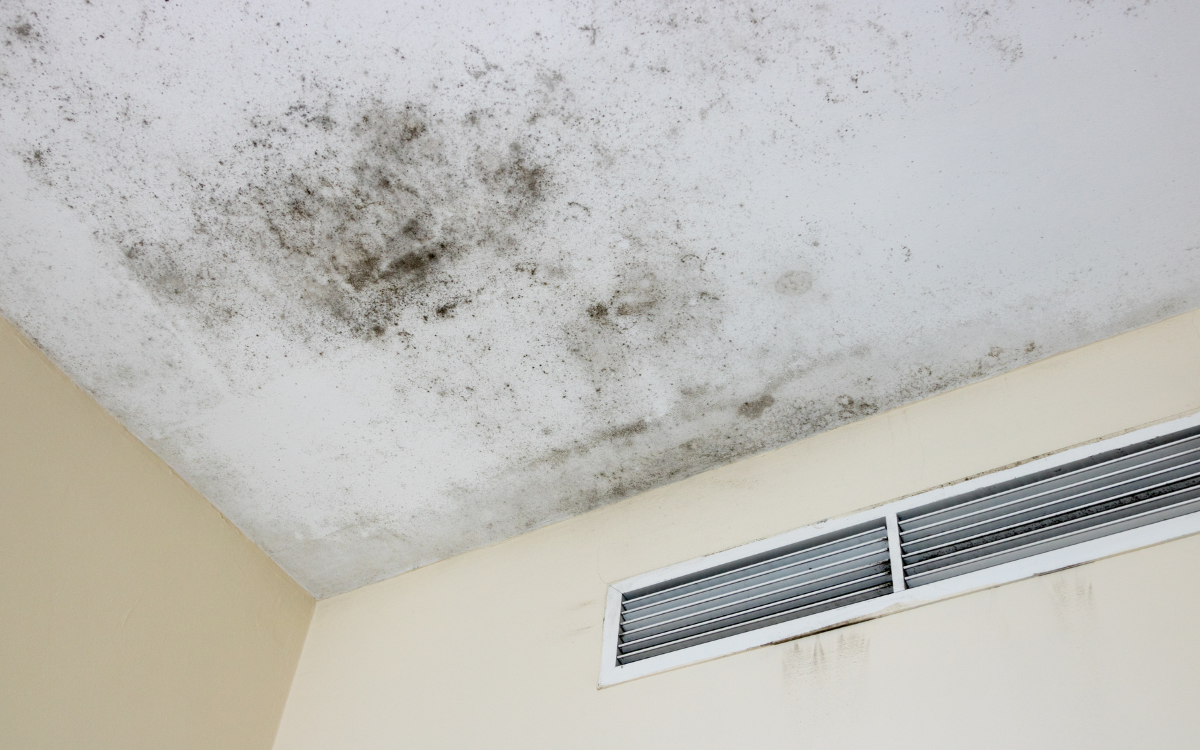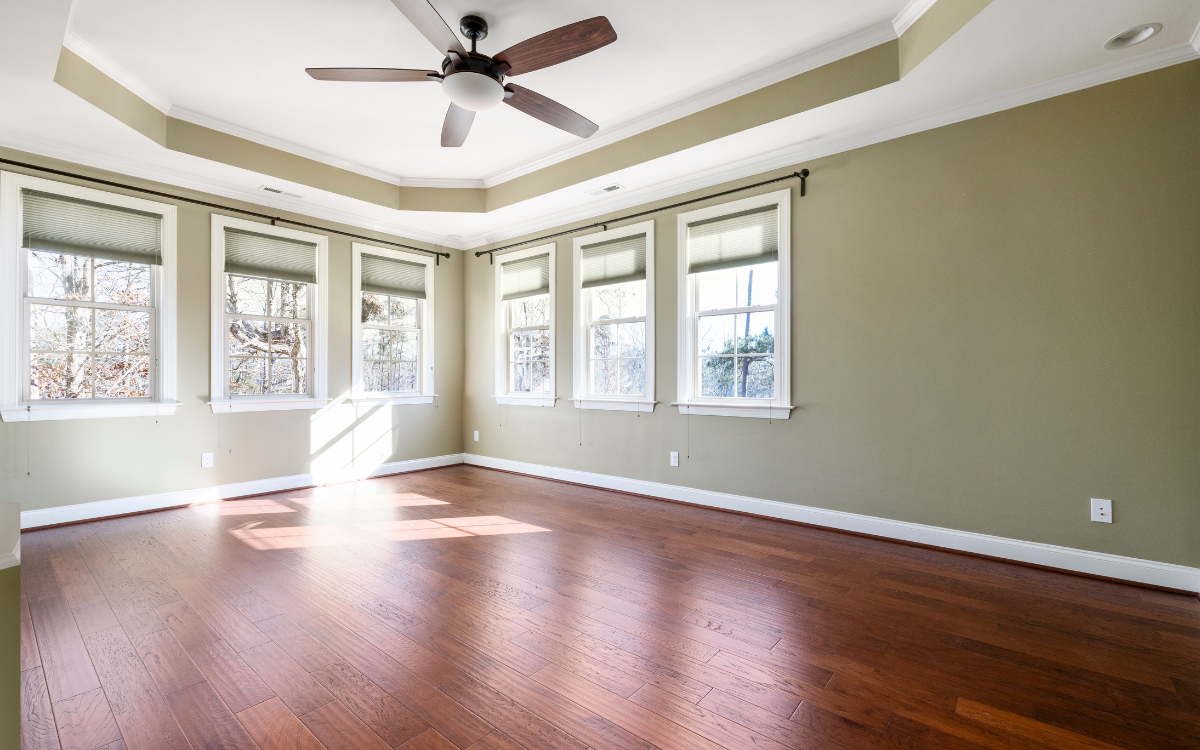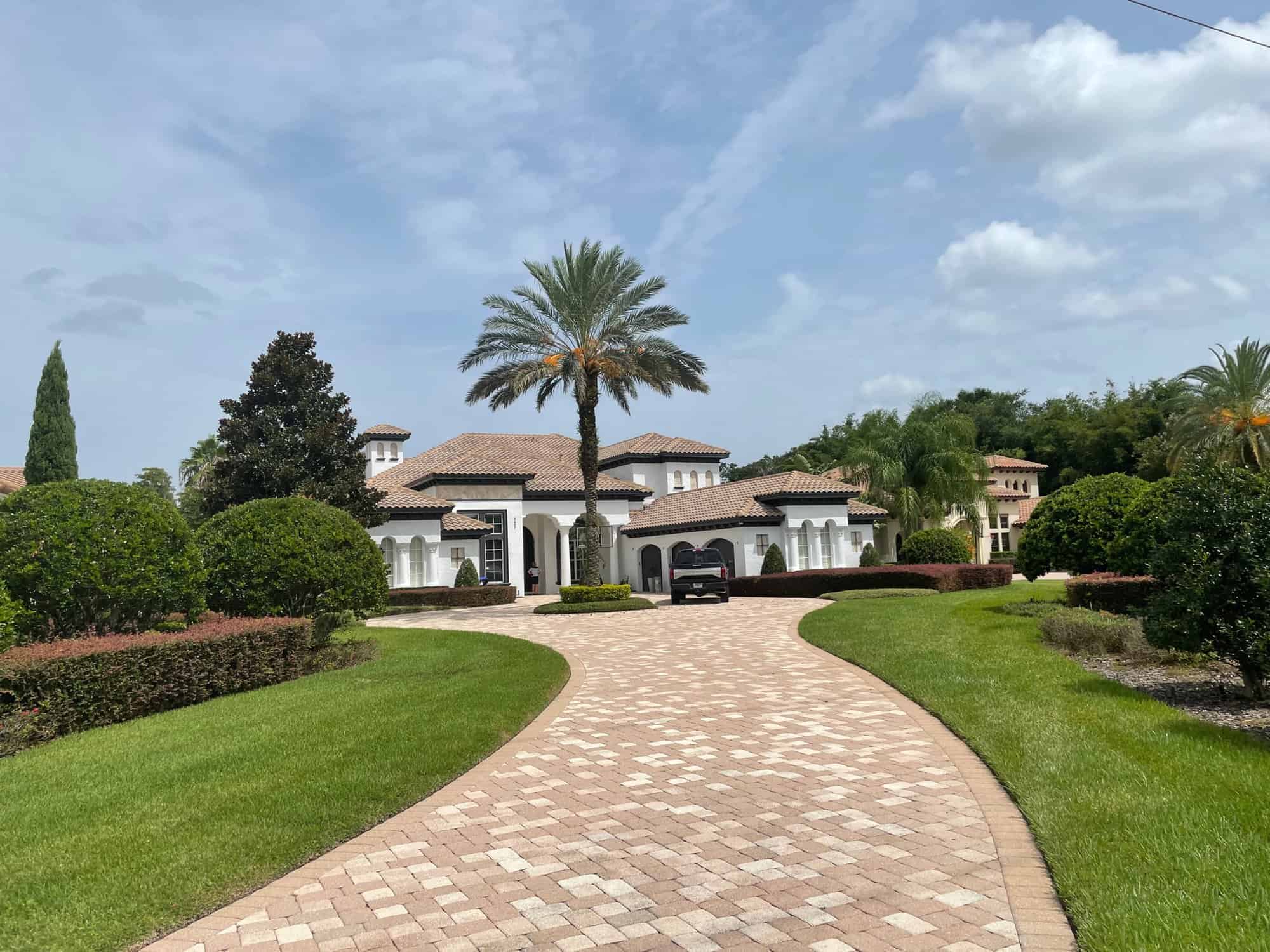Nothing ruins the look of a clean, well-maintained home quite like an unsightly water stain on the ceiling. Maybe you just noticed it, or perhaps it’s been there for a while, gradually getting worse. Either way, ceiling stains aren’t just cosmetic issues—they often indicate underlying problems like leaks, poor ventilation, or excess moisture.
If you need to remove ceiling water stains in Kennesaw, GA, the solution isn’t as simple as just covering it with paint. You need to track down the cause, properly clean the stain, and apply the right products to ensure the stain doesn’t return. In this guide, we’ll walk through the process step by step, including expert advice to make sure your ceiling looks as good as new.
Key Takeaways:
- Ceiling water stains are typically caused by plumbing leaks, roof problems, or humidity issues.
- Fixing the source of the problem is essential before tackling the stain.
- Effective cleaning solutions include vinegar, hydrogen peroxide, and bleach.
- A high-quality stain-blocking primer and moisture-resistant ceiling paint ensure a flawless finish.

Common Causes of Ceiling Water Stains
How to remove ceiling water stains? Before getting to the cleaning and painting steps, it’s important to figure out what’s causing the stain in the first place. Ignoring the root cause will only result in recurring stains and potential structural damage. Here are some of the most common reasons why water stains appear on ceilings:
Plumbing Leaks from Above
A water stain directly below a bathroom, kitchen, or laundry area? That’s a sign of a slow plumbing leak. Even minor drips from supply lines, drainpipes, or toilet seals can saturate drywall, leading to ceiling stains, moisture damage, and mold growth.
Roof Leaks & Gutter Issues
Stains in the middle of a room or near exterior walls could indicate a roof problem. Missing shingles, cracked flashing, or clogged gutters allow rainwater to seep into the home, eventually showing up as ceiling stains. Proper roof maintenance is key to preventing this type of water damage.
Condensation & Poor Ventilation
Excess humidity in bathrooms, attics, and kitchens can create condensation on ceilings. Without proper airflow, moisture builds up over time, leading to stains, mold, and mildew. Installing exhaust fans and improving ventilation can help prevent this issue.
Gutter Overflows & Drainage Problems
When gutters become clogged, water overflows and can seep into your home’s structure, causing stains on the ceiling. Regular gutter cleaning and proper drainage are essential to keeping your ceilings free of water damage.
Fixing the Root Cause Before Cleaning the Stain
Removing the stain without addressing the source is a temporary fix. If you don’t resolve the underlying problem, the stain will return, and you may even experience more significant structural damage. Here’s how to prevent that from happening:
1. Inspect Your Roof
A damaged roof is a major source of water stains. Look for missing or cracked shingles, damaged flashing, or clogged gutters. Even small gaps can let moisture seep in over time. If you suspect a roof issue, consider hiring a roofing professional to inspect and repair the damage.
2. Check Plumbing Fixtures
Water stains located below a bathroom, kitchen, or laundry room could be the result of leaky pipes, loose fittings, or faulty seals. Inspect the area thoroughly for damp spots, dripping water, or unusual discoloration on walls and ceilings. Fixing plumbing leaks early can prevent extensive water damage and costly repairs.
3. Improve Ventilation
Poor ventilation can lead to condensation buildup, especially in bathrooms, kitchens, and attics. High humidity levels encourage mold growth and contribute to persistent ceiling stains. Installing or maintaining exhaust fans, using dehumidifiers, and ensuring proper air circulation throughout your home can significantly reduce the risk of moisture-related stains.
4. Maintain Gutters & Downspouts
Clogged or damaged gutters can lead to water backing up and seeping into your home. Regularly clean out debris, ensure downspouts direct water away from your foundation, and check for leaks in your gutter system. Proper drainage is essential for keeping your home’s interior dry and stain-free.
By identifying and fixing the root cause of water stains, you can prevent further damage and maintain the structural integrity of your home. Once the issue is resolved, you can confidently move forward with cleaning and restoring your ceiling.
Best Methods to Remove Ceiling Water Stains
Depending on how severe the stain is, different cleaning solutions may be needed. Here are the most effective methods:
1. Vinegar for Light Water Stains
Vinegar is a natural and non-toxic cleaner that works well on mild water stains. It helps break down mineral deposits left behind by water seepage. To use, mix equal parts white vinegar and warm water in a spray bottle. Mist the affected area generously and let it sit for about 20 minutes. Then, using a sponge or soft cloth, gently wipe the stain in circular motions. If necessary, repeat the process until the stain disappears. Vinegar also has mild antifungal properties, which can help prevent mold growth.
2. Bleach Solution for Mold & Persistent Stains
For tougher stains or those caused by mold, a bleach solution is the best option. Bleach effectively kills mold spores and removes dark stains from water damage. Mix one part bleach with three parts water in a spray bottle and apply it to the stain. Let it sit for about 10 minutes, allowing the bleach to break down the discoloration. Afterward, wipe the area clean with a damp sponge and rinse with fresh water. Make sure to ventilate the room properly and wear gloves when handling bleach to avoid irritation.
3. Hydrogen Peroxide for Deep Stains
Hydrogen peroxide is an excellent alternative to bleach for deep-set stains, especially on drywall or popcorn ceilings. Unlike bleach, it doesn’t leave behind strong odors and is a gentler option for delicate surfaces. To use, pour 3% hydrogen peroxide into a spray bottle and mist the stain thoroughly. Allow it to sit for at least 30 minutes before blotting the area with a clean cloth. This method lifts discoloration without damaging ceiling materials and works well for persistent water stains.
If the stain doesn’t fully disappear, the next step is interior repainting.
Our Process for a Seamless, Long-Lasting Finish
At Sharper Impressions Atlanta, we follow a thorough process to ensure your ceiling looks flawless and stays protected:
1. Surface Preparation
- Sand down rough patches to create a smooth surface.
- Fill any cracks or holes with high-quality drywall compound.
- Clean the ceiling to remove any dust, dirt, or lingering cleaning residues.
2. Applying a Stain-Blocking Primer
Using an oil-based or shellac-based primer is essential to preventing stains from bleeding through the new paint. This step is key to achieving a long-lasting finish.
3. Choosing the Right Ceiling Paint
We use moisture-resistant paint, particularly in high-humidity areas like kitchens and bathrooms. A matte or flat finish ensures an even, seamless look that hides imperfections.
4. Professional Painting Services
While DIY solutions exist, hiring interior painters in Kennesaw GA ensures a superior result. Our team applies premium-quality paint evenly, providing a smooth, streak-free finish that enhances both appearance and durability.
Let the Pros Handle It

So, how to remove ceiling water stains? Dealing with ceiling water stains can be frustrating, but you don’t have to tackle it alone. Whether it’s identifying the cause, cleaning the stain, or repainting, our skilled interior painters in can handle the job efficiently and professionally.
At Sharper Impressions Atlanta, we specialize in water damage restoration, drywall repair, and expert interior painting to restore your ceiling to perfection. Don’t settle for DIY headaches—get the job done right the first time.
📍 Serving Acworth, Marietta, and surrounding areas. Call us at 470-912-1001 for a FREE estimate today!







